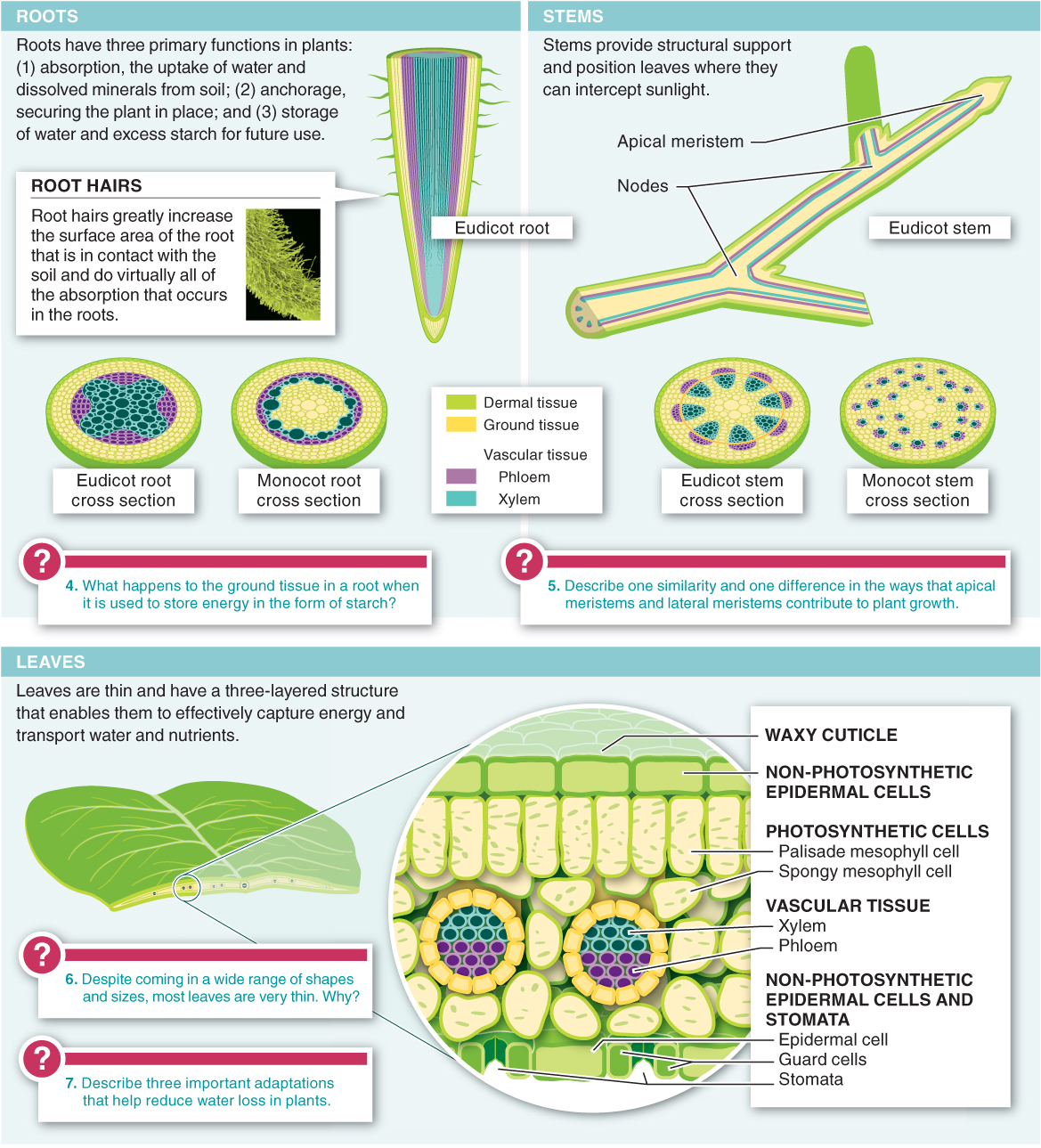17.4–17.7: Most plants have common structural features.
The body plans of plants are organized around three structures: roots, stems, and leaves.

722
Question 17.26
For a typical green plant to thrive, it needs:
- a) sunlight, water, carbondi oxide, oxygen, and minerals.
- b) only water.
- c) only minerals.
- d) only sunlight.
- e) only sunlight, water, oxygen, and minerals.

Question 17.27
Plants do not grow well in pure clay soils because:
- a) the soil packs so tightly that the roots cannot penetrate it.
- b) the soil packs so tightly that the amount of oxygen reaching the roots is limited
- c) water drains too rapidly.
- d) the mineral content is very low.
- e) clay holds water and will not release it to the roots.

Question 17.28
The enzyme known as __________ catalyzes the fixation of nitrogen in nitrogen-
- a) nitrogen reductase
- b) nitrogenase
- c) rhizobiase
- d) ammoniase
- e) nitrogen fixase

Question 17.29
All of the following statements about carnivorous plants are correct except:
- a) The carnivorous structures (such as pitchers) contain chloroplasts and are photosynthetic.
- b) The carnivorous structures are less efficient at photosynthesis than typical leaves.
- c) Increasing the amount of nitrogen available to a pitcher plant causes a decrease in the plant’s investment in carnivorous structures.
- d) Carnivorous plants usually cannot outcompete non-
carnivorous plants in nutrient- rich soils. - e) Carnivorous plants thrive in nitrogen-
rich tropical habitats.
